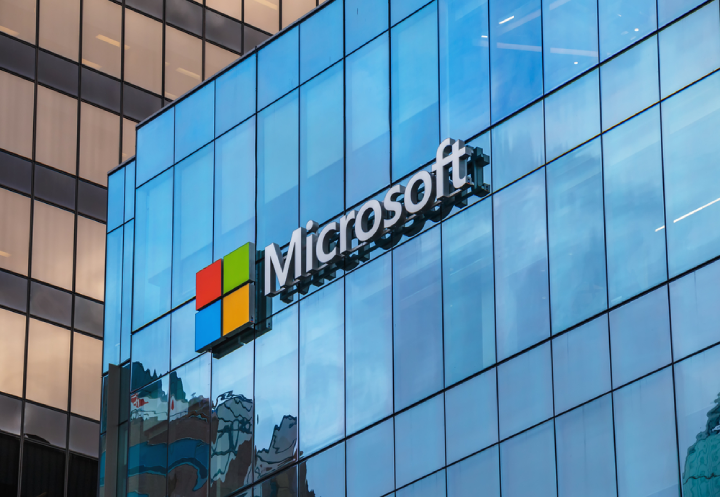
The biggest computer software seller in the world, Microsoft, has a wide variety of products to offer its users. From desktop office functionalities like Word and Excel to cloud platforms and email services like Outlook.
The company was born in 1975, when Bill Gates and Paul Allen, at the time classmates at Harvard University, decided they wanted to attempt to create a compiler for one of the first computers in history, the Altair 8800. After being hired by Micro Instrumentation and Telemetry Systems (MITS) to aid with their projects, they left only one year later to further work on their own idea, Microsoft, which was incorporated as a registered company in 1981.

While the rest is history, it is important to outline the variety and dynamic interfaces Microsoft offers.
Who owns Microsoft?
Microsoft is a publicly traded company and, therefore, it does not have one single owner. The biggest shareholder of the corporation is Satya Nadella, who has also covered the role of Chief Executive Officer (CEO) since 2014. However, he joined Microsoft in 1992.
Among his projects were also Microsoft Cloud and Enterprise groups, which he guided towards the transition to the cloud infrastructure. Partly thanks to him, the company is one of the main cloud providers today.
The other two most significant shareholders are Bradford L. Smith and Jean-Philippe Courtois. Smith owns 0.01% of the total shares, and he now acts as president and chief legal officer of Microsoft, where he first covered the role of general counsel in 2003. Courtois, on the other hand, is the executive vice president and president of Microsoft Global Sales, Marketing and Operations. He first joined the company in 1984, covering various roles such as general manager of Microsoft France and President of Microsoft International.
There are also institutional shareholders, which hold over 70% of the total Microsoft shares. The top three are Vanguard Group Inc., which owns 8.4% of the total outstanding shares, BlackRock Inc., with 6.8% of shares and State Street Corp, with 4.2%.
What are the main products?
Gates’ former company is among the top tech companies in the world. It has several products that heavily impacted the technological field we know today, among which are Internet Explorer (which has now been discontinued) and Edge.
Microsoft is behind the Windows Operating System in the computer environment, even if it initially struggled with its success. When Windows 1.0 was first launched in 1983, it was not a hit since Apple already launched a similar interface. With Windows 3.0 in 1990, on the other hand, Microsoft started seeing some consensus. In 2000, Windows 2000 was launched followed by Windows XP, which ran from 2003 until 2007, when Vista was introduced. The latest development was Windows 11, launched in 2021.
Other staples of Microsoft’s portfolio are Microsoft Office and Microsoft 365, which are productivity software. Firstly created in 1990, Microsoft Office included Word, Excel and PowerPoint for desktop. In 2017, when the company started steering towards a cloud-based approach, it launched Office 365, which is a yearly subscription to its office software, which today also includes Outlook.
Apart from other management applications and development platforms such as Visual Studio and .Net, Microsoft also set its food in the hardware world. Indeed, in 2001, it announced the Xbox gaming console, which evolved into Xbox 260 in 2005, Xbox One in 2013 and Xbox Series X and S in 2020.
When it comes to cloud platforms, Microsoft is most known for owning Microsoft Azure, first created in 2008 as a direct rival of Amazon Web Services. This platform offers computing, analytical, storage, management, machine learning and big data capabilities.
Microsoft also acquired Skype, Nokia, and LinkedIn in 2011, 2013 and 2016.
What are Microsoft’s plans with ChatGPT?
Since Microsoft announced its £10bn investment in OpenAI at the start of 2023, ChatGPT’s founder has already included its functions into the search engine Bing. CEO Nadella explained that “Every product of Microsoft will have some of the same AI capabilities to completely transform the product.”
The near future will see a total change in the way Microsoft’s products work, with the introduction of new ones too. For instance, 2021 saw the launch of GitHub Copilot, which uses ChatGPT’s Codex engine to automate the writing of code. Indeed, this application mostly aims to help coding experts in the task and it was the first Microsoft app that only works as a natural language tool.
Microsoft Office and Office 365 are also looking at the integration of ChatGPT in their structure, thanks to Microsoft 365 Copilot. Therefore, applications like Word, PowerPoint and Excel will see more automation and formatting. Alongside these desktop applications, Microsoft Teams already integrated some functions of ChatGPT, under the premium payment plan. Indeed, users can ask the software to take notes automatically, create bullet points with time stamps references to an ongoing conversation and even summarise transcripts of calls.
Apart from these, Microsoft made clear that its plans with ChatGPT are an ongoing conversation and we can almost certainly expect much more.
What is the relationship between Microsoft and ChatGPT?
The reason Microsoft and ChatGPT are closely linked is because of Microsoft 365 Copilot. According to Microsoft’s website, it is “an AI-powered digital assistant that aims to provide personalised assistance to users for a range of tasks and activities”.
The end goal of Copilot is to connect and combine the power of AI-based automation with Microsoft’s functions. Large language models (LLMs) are fused with the user’s data in the Microsoft Graph, which oversees calendars, emails, chats, documents and meetings, improving the quality and fluency of words.
These functions can help with similar tasks as ChatGPT, such as writing essays, creating lists, writing reviews, summarising content and building documents.






